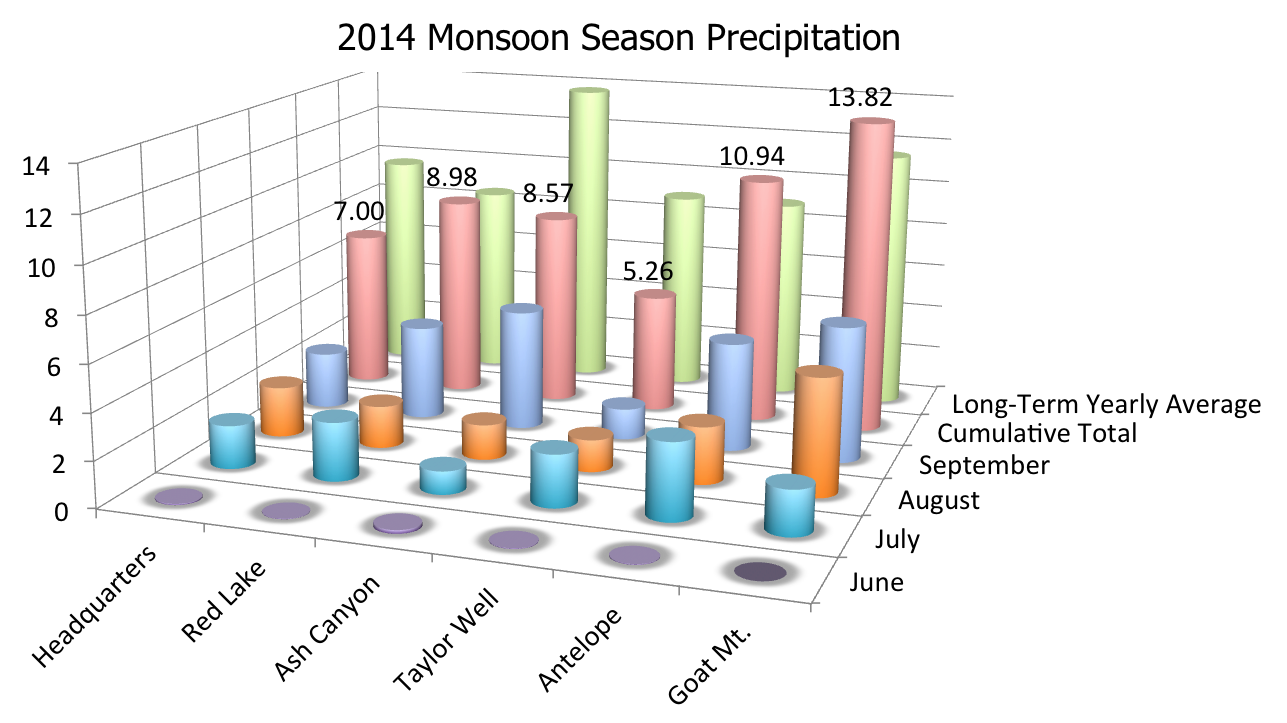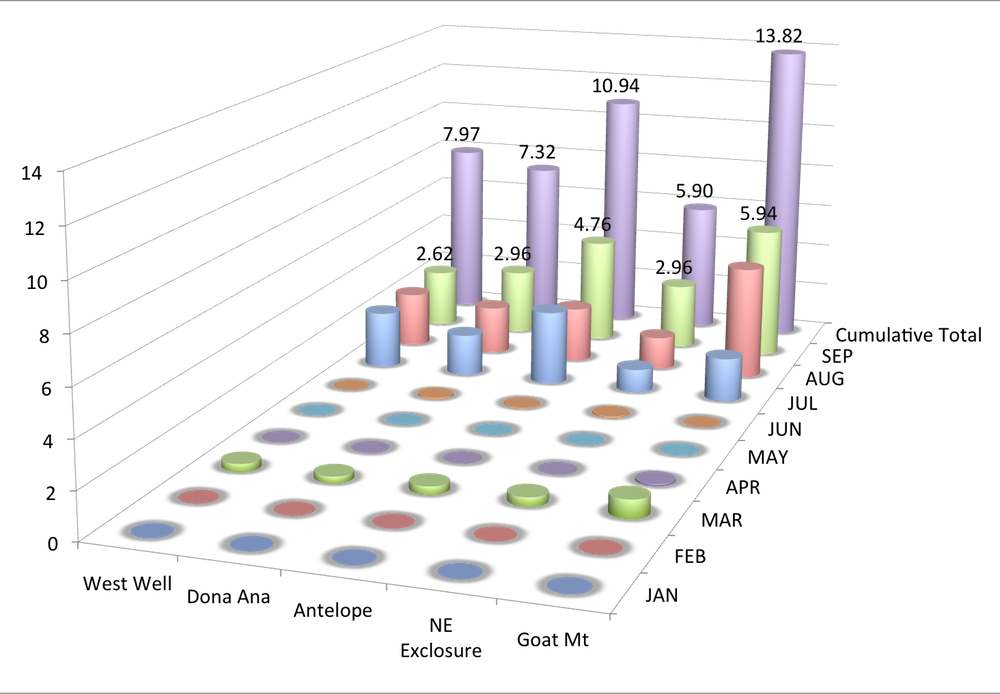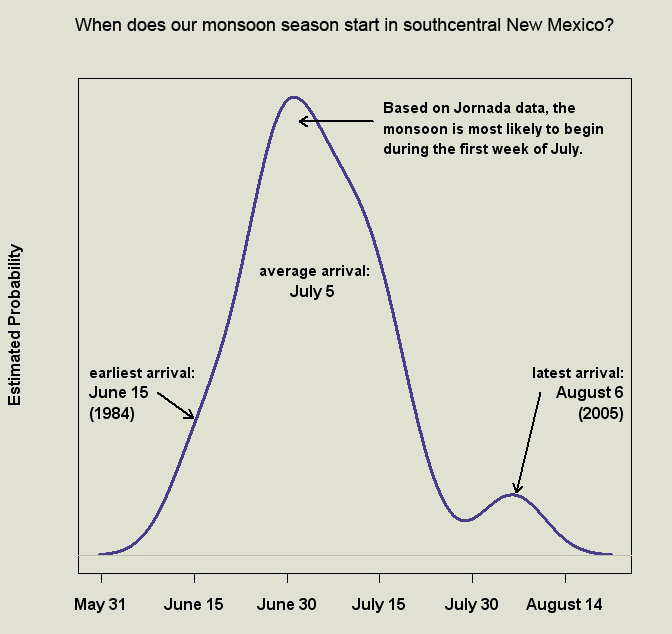
The Jornada Experimental Range lies within the Chihuahuan Desert, the largest desert in North America. The climate is typical of semidesert grassland, the most arid of the North American grassland regions. There is an abundance of sunshine, a wide range between day and night temperatures, low relative humidity, and extremely variable precipitation.
There are two precipitation periods: summer rains occur primarily in July, August, and September; whereas, winter precipitation occurs from December to February. Winter frontal storms originate over the Pacific Ocean and are characterized by gentle, low-intensity precipitation that covers wide areas and may last for several days. Summer precipitation originates in the Gulf of Mexico and occurs as intense, convective thunderstorms that are highly localized and of short duration.
Rainfall records exist for the Jornada Experimental Range headquarters since 1915 and at other locations on the Range for equal or shorter time spans. Mean annual precipitation is 9.72 inches (247 mm) with 53 percent of the annual rainfall occurring between July 1 and September 30. Droughts, or periods of low rainfall that seriously injure vegetation, are a recurrent climatic phenomenon. Severe droughts occurred in 1916-18, 1921-26, 1934, and 1951-57. The 1951-57 drought is believed to be the most severe in the past 350 years.
Mean maximum ambient temperature is highest in June when it averages 97 F (36 C); temperature is lowest in January when the mean maximum is 56 F (13.3 C). The effective growing season, when both precipitation and temperature are favorable, is normally July through September.
Select standard rain gauge monthly and cumulative totals through September 2014

Precipitation monthly averages are calculated from daily maximum temperature and precipitation values. Along with minimum temperature, data have been collected at Jornada headquarters since June 4, 1914. The data record (incomplete at this time) is available at https://jornada.nmsu.edu/data-catalogs/climate. It is also available through the NOAA Satellite and Information Service at https://www.ncdc.noaa.gov.
|
The monsoon season, the period during the summer when thunderstorms provide a little more than 50% of our annual precipitation, is defined by the National Weather Service as June 15 - September 30. The graph above was developed from a 35-year record of daily rainfall within the northern portion of Dona Ana County, New Mexico, about 25 miles northeast of Las Cruces, NM. The graph presents the date each year we have estimated to best represent the start of the monsoon season. Typically, the monsoon season most often starts the first week of July, but it has started as early as June 15 and as late as August 6, since 1976. |
|
|
An unusual rainfall on June 4, 2004. Photo was taken on the main road to the Jornada. |



